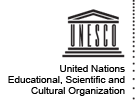Development Communication Society Nepal (SODEC-Nepal) intends to analyze the causes and consequences of impunity with in-depth analysis of the 35 cases of murdered journalists and the 4 missing journalists. It is anticipated that that this study will pressurize the government and state agencies to take the necessary legal steps to provide justice to the families of the
Countries: Nepal
Against this backdrop, WWJ and ASMITA jointly propose a project entitled “Strengthening Capacity of Women Journalists Working in Community Radio in Nepal” to create increased and balanced coverage on gender issues and contribute to a more objective, free, pluralistic and progressive media that will subsequently help to establish a more vibrant, inclusive and democracy in Nepal.
There have been many recent cases of the Nepalese media failing to comply with norms of pluralism and gender equality. As a result, Nepal’s marginalized groups (namely women and ethnic/religious minorities) lack trust in the media and often feel their issues are not dealt with fairly. This project will therefore train journalists to promote gender equality and pluralism in the Nepali media so that they can provide balanced coverage on issues regarding marginalized and excluded communities. This project will contribute to a more objective, free, pluralistic and progressive media that will...
Nepal’s media sector is large and growing rapidly. However, many people are entering the sector without even basic journalism training. This is because there are few journalism training institutes in Nepal. To address this shortcoming and thereby improve the quality of the media sector in Nepal, this project will train new journalists from five districts of Nepal.
Nepal has a vibrant and rapidly growing media sector. According to the Press Council Nepal there are 89 daily newspaper and more than 381 weekly newspapers. In addition, according to the Ministry of Information and Communication, there are more than 326 FM stations and 38 Television channels in operation. Although the number of media houses and the number of people interested in making a career in journalism have gone up in recent years, there are still very few women journalists. According to the statistics of Federation of Nepali Journalists (FNJ), out of the total 9000 journalists, only...
In many rural areas of Nepal, Community Radios (CR) represent the only form of media available, providing services to the marginalized and disadvantaged people who have often been ignored by mainstream media. With the continued increase of the CRs, effective implementation of a Code of Conduct has become vital to build on self-regulatory mechanisms in enhancing CR professionals’ unbiased coverage, honesty, accuracy and reliability. This project will establish a mechanism to hold CRs accountable to play a greater role as a watchdog. Self-regulation is a function that lies at the very the...
Journalism education was initiated in Nepal in 1976 as the Journalism Department of the Tribhuvan University (TU) was established with support from UNESCO. Today, there are three universities and approximately 170 colleges giving training in journalism in Nepal, and the Nepali media landscape is thriving with thousands of newspapers and magazines, hundreds of radio channels and more than 30 TV channels. Journalism and mass communication courses are witnessing considerable demand from students with intent on pursuing careers in journalism and communication.
While the boom in...
Media in Bhutan has undergone considerable growth after the establishment of democracy in 2008. Today, mass communication in Bhutan encompasses both traditional and New Media technologies, ranging from newspapers, radio and TV to mobile phones and the internet. According to a UNESCO-supported Media Development Assessment (MDA) conducted in Bhutan in 2010, there are vital elements missing in the media landscape which need to be addressed. These include policy and legal frameworks to support the growth of media; Right to Information laws to ensure transparency and good governance; Fiscal and...
In recent years there has been an increase in the number of lawsuits filed against media professionals on grounds such as defamation, contempt of court, breach of parliamentary privilege, sedition, and breach of public morals and media ethics. This has exposed an urgent need for journalists to acquire an understanding of the legal environment in which they operate in order to protect themselves against such dangers. The Asia-Pacific Institute for Broadcasting Development (AIBD) is committed to addressing the issue of legal awareness among journalists in order to maintain plurality of...
Nepal's media sector has made great advances in the past two decades, with the introduction of laws ensuring press freedom paving the way for private and community involvement in the media. Today, more than 11 television channels broadcast from Kathmandu, and over 237 radio stations operate within the country, including a substantial number of community radio stations. Community radio has the proven potential to enable marginalized communities to exercise their right to knowledge and information, including them in policy and decision-making processes, and promoting the diversity of their...
